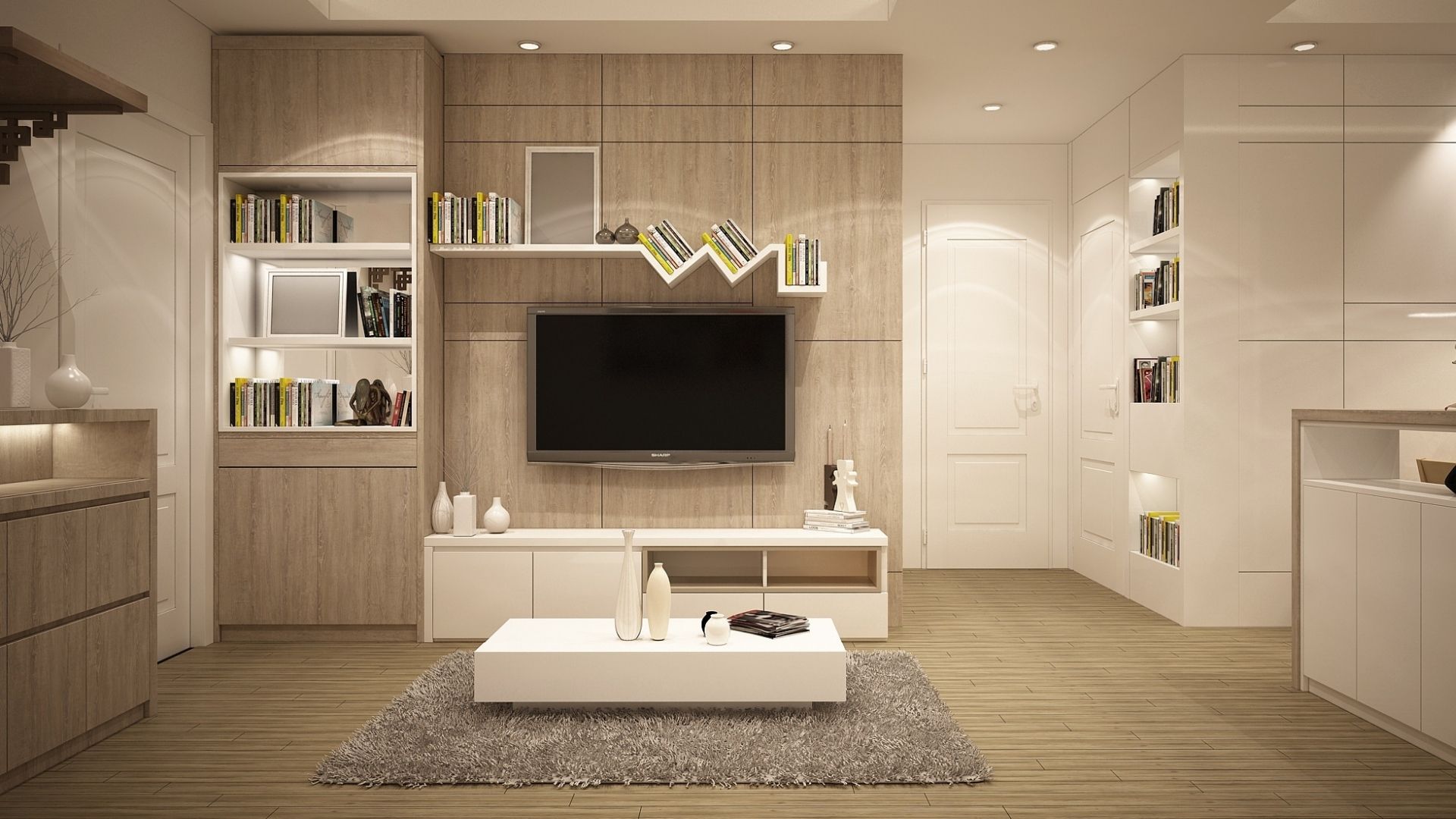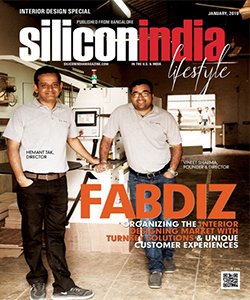Where Work and Style Collide
Gone are the days when offices were just four walls and a desk; now, your workspace is a blend of function and comfort, whether it’s a spacious home office design or a cozy corner. The new normal has transformed the commute from a bustling street to a simple journey from bed to desk, and the dress code is famously “business casual from the waist up.”
The pandemic might have stirred up our daily routines, but it also gifted us with a novel perspective on how we approach our workspaces. As we transition into a post-pandemic world, the significance of a thoughtfully designed home office takes the spotlight.
No matter the size of your space, the art of crafting a small office interior design that nurtures focus and inspiration remains paramount. So, as we gracefully balance the tightrope between our work and home lives, seize a moment to curate a space that harmonizes with your professional requirements. Because in this ever-evolving work landscape, a well-planned home office isn’t just an alternative; it’s an absolute necessity for ensuring you stay at the top of your game. Whether it’s a sprawling setup or a compact nook, the power of a well-considered home office design is your ticket to productivity and success. A dedicated workspace in your home helps you set aside household distractions and focus on work.
What We'll Cover
ToggleHome Office Interior Design Ideas
In the ever-evolving world of remote work, home offices have become more than just functional spaces. They are now extensions of our personalities and productivity hubs that deserve thoughtful design. Whether you’re revamping an existing home office or carving out a new workspace, these interior design ideas will help you create a harmonious, motivating, and aesthetically pleasing environment that enhances both work and well-being.
Ergonomic Home Office Design:
Start with the essentials. Invest in an ergonomic chair that supports your posture and a desk at the right height to minimize strain. Ergonomics is the foundation of a comfortable and productive home office.
Embrace Natural Light:
Whenever possible, position your desk near a window. Natural light not only reduces eye strain but also boosts mood and productivity. If natural light is limited, choose warm, daylight-simulating LED bulbs to mimic sunlight.
Choose the Right Color Palette :
Colors can greatly influence your mood and focus. Blues and greens evoke calmness, while yellows and oranges stimulate creativity. Neutral tones like grays and whites create a clean, modern look. Consider your work style and objectives when selecting your color scheme.
Personalize with Decor:
Make the space your own by incorporating personal touches. Decorate with artwork, inspirational quotes, or family photos. These elements can serve as motivation and create a warm atmosphere.
Declutter and Organize:
Clutter is the enemy of productivity. Invest in storage solutions like shelves, cabinets, and drawer organizers to keep your workspace tidy. Regular decluttering sessions are a must.
Greenify with Indoor Plants:
Indoor plants not only add a touch of nature but also improve air quality. Choose low-maintenance plants like succulents or snake plants to brighten your home office.
Create a Dedicated Workspace:
If possible, set up a dedicated area solely for work. This helps mentally separate work from leisure and creates a more focused atmosphere.
Invest in Technology:
Ensure your home office is equipped with the necessary technology. High-speed internet, a quality webcam, and noise-canceling headphones are essentials for virtual meetings.
Stay Flexible Lastly, consider a flexible layout. Furniture on wheels, modular storage, and adjustable desks allow you to adapt your home office as your needs change.
With these interior design ideas, your home office can become a space where productivity, creativity, and comfort coexist. Remember that your home office should reflect your unique style and preferences, creating an environment where you can thrive while working remotely.
Creative Ways to Design Your Home Office Interiors
Indoor Plants in Home Office
When planning your home office interior design, don’t forget to consider the positive impact that indoor plants can have. Whether you choose a small succulent for your desk or larger potted plants strategically placed around the room, they can be a valuable addition to your workspace.
Incorporating indoor plants into your home office interior design is a simple yet effective way to create a healthier, more inspiring, and aesthetically pleasing workspace. So, when you’re setting up your home office, remember to make room for some green companions. Your work environment will thank you.
Creating a Dedicated Home Office for Professional Impressions
When it comes to home office design, setting the right impression is crucial, especially if you anticipate client visits. It’s a practical solution for those who require a professional and private workspace within the comforts of their home.
One effective approach is to allocate a separate room solely for your home office. Having a designated room for your home office interior design immediately communicates professionalism to clients and colleagues. It shows that you take your work seriously and have a dedicated space for it.
By dedicating a distinct space, you not only establish a professional atmosphere but also ensure privacy and organization.
Exposed Brick in Your Home Office Design
Creating a modern-day home office that’s both functional and visually appealing doesn’t have to be complicated. Sometimes, simplicity speaks volumes. One way to achieve this is by incorporating an exposed brick wall and pairing it with a minimalist study desk.
Unlike more elaborate home office interior designs, this idea is easy to implement. You can choose to expose an existing brick wall if available or use brick veneers for a similar effect. Pair it with a sleek desk and minimal furnishings to complete the look. With a minimalist study desk placed against the brick wall, the emphasis remains on functionality. This setup is ideal for individuals who prefer a distraction-free workspace that promotes productivity.
Window Seat Home Office Design
The window seat office concept showcases how thoughtful design can merge comfort, style, and functionality in your home office design. It’s an exceptional way to create a workspace that’s both inviting and productive. The integration of a window seat into your home office design adds a unique and visually pleasing element. It becomes a focal point that blends functionality with aesthetics seamlessly.
The window seat’s built-in shelving can be customized to accommodate books, office supplies, or decorative items, helping you stay organized and maintain a clutter-free workspace. When not in use as a home office, your window seat can serve as a reading nook, a place for reflection, or a comfortable spot to enjoy a cup of tea. This versatility adds depth to your home office design.
Home Office Design under the Stairs
Creating a home office under the stairs is a brilliant way to maximize space in your home while also achieving a functional and stylish work environment. This innovative home office design makes use of often-overlooked areas to create a dedicated workspace.

When it comes to home office design, innovation knows no bounds. An under-stairs home office exemplifies this ingenuity, turning an often-overlooked area into a practical and visually appealing workspace. By making the most of underutilized spaces, you not only optimize your home’s functionality but also add a touch of uniqueness to your daily work routine.
Corner Office Home Office Design
Designing a home office in a corner of your living space can be a smart and space-efficient solution. Identify a corner in your home that’s away from high-traffic areas and distractions. This space-efficient choice optimizes room layout and minimizes disruptions.

Choose a corner desk that fits snugly into the space. L-shaped or triangular desks are ideal for utilizing corner areas effectively. Opt for one with built-in storage to keep your workspace organized. A well-designed corner home office can maximize the use of limited space while providing an efficient and comfortable work environment. Whether it’s a dedicated room corner or a nook in your living area, this design approach allows you to balance work and home life seamlessly.
Home Office Design in Closet
Designing a home office within a closet is a clever way to utilize limited space while maintaining a functional workspace. A closet home office is a fantastic solution for those with limited space. It offers privacy, organization, and the ability to maintain a clear boundary between work and personal life.

With thoughtful design and organization, you can transform a small closet into an efficient and stylish home office that meets your needs. If you prefer to hide your workspace, consider installing sliding closet doors, curtains, or a folding screen that can be closed when you’re not working.
Home Office Design between the Cabinets

Imagine a home office right between your kitchen or living room cabinets. This clever setup optimizes space in your home, turning an unused nook into a functional workspace. With a custom desk and thoughtful organization, you can seamlessly integrate work into your daily routine without the need for a dedicated room. It’s an efficient and unobtrusive way to create a home office that’s both practical and accessible.
That’s a Wrap
In the ever-evolving landscape of work, the concept of a home office has undergone a remarkable transformation. It’s no longer just a place where tasks are accomplished; it has become an integral part of our daily lives, an extension of our personality, and a hub of productivity. From the traditional study rooms to the innovative closet offices and under-the-stairs nooks, the realm of home office design has expanded to offer a multitude of unique and efficient solutions.
In conclusion, the evolution of home office design mirrors the dynamic nature of work itself. It adapts to our changing needs and preferences, creating spaces that are not just functional but also harmonious with our lifestyles. Whether you’re nestled between kitchen cabinets, basking in the sunlight on a rooftop, or exploring any other innovative home office design, the common thread is the pursuit of efficiency, comfort, and personal expression. These spaces aren’t just where work gets done; they are where ideas bloom, and dreams take shape. In the end, a well-designed home office is a reflection of you — your aspirations, your style, and your dedication to living a balanced and fulfilling life in a world that keeps evolving.
FAQs
When designing a home office, key considerations include selecting an ergonomic setup, optimizing lighting, managing cables for a clean look, and incorporating storage solutions to keep the workspace organized.
To create a cohesive look, choose furniture and color schemes that complement your existing home decor. Use decor elements like artwork and plants to tie the home office design into the overall aesthetic.
For smaller spaces, consider wall-mounted desks, convertible furniture, or utilizing underutilized areas like closets or nooks. Vertical storage solutions and minimalistic design can also maximize space.
To create an inspiring home office, personalize the space with motivational quotes, artwork, or a vision board. Incorporating natural elements like indoor plants and maximizing natural light can also boost motivation and creativity.
Yes, you can make eco-friendly choices in your home office design by using sustainable and recycled materials for furniture, opting for energy-efficient lighting, and incorporating indoor plants for better air quality. Additionally, consider second-hand or upcycled furniture to reduce your environmental footprint.




